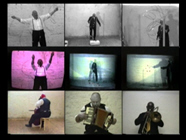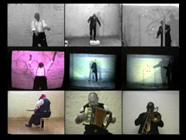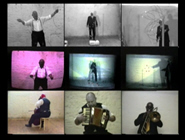 |
 |
 |
 |
 |
 |
|
|
 |
 |
|
|
|
|
|
|
||
|
|
Rudolf POLANSZKY | |
|
|
||
|
It?s a proven fact that the stock of prime numbers is, to all intents and purposes, infinite. A number is described as prime if it has no whole denominators except 1 and itself. Examples are 1, 3, 7, 11? 103, 123461 etc. The cyclical randomness, albeit perfect symmetry, of their structure serves as a point of departure for many mathematicians? research. The famous Riemannian theorem, for example, is one of many attempts that have been made to describe and explain prime numbers. Very high prime numbers are highly prized by computer technicians for their usefulness in the encryption of data. Many gaps in our understanding of such numbers - dubbed ?unsolved prime number problems? ? represent the undiscovered jewels in the world of mathematics. |
|
Exhibitions |
Rudolf Polanszky, 2003 |
|
Galerie Hohenlohe & Kalb, Wien, Austria |
|
|
|
|
|
|
|
Specifications |
stereo color PAL |
|
Technical protocol |
VHS (recording); post production using recent recording and version filmed from monitor following modifications; VHS (master); DVD (master copy) |
|
Installation: |
|
|
Edition |
Wiener Fassung |
|
Copyright |
Rudolf Polanszky |
|
Copy to see |
Niederösterreichisches Landesmuseum, St. Pölten, Medienkunstarchiv Wien |
|
|
|
|



|